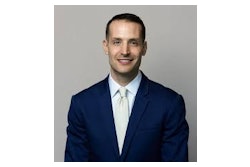Too often, college and university presidents are forced to reinvent the wheel when establishing the position of chief diversity officer (CDO) because they do not understand the role and function of the position, says Dr. Damon A. Williams, assistant vice provost for multicultural and international affairs at the University of Connecticut.
With the release by the American Council on Education of a blueprint Monday (and a book in the fall) for establishing a chief diversity office and officer and creating an environment for them to thrive, Williams says those predicaments for presidents and higher education in general should cease.
“We really wanted to pull together an empirical grounded statement to really help all of higher education to really be able to develop these roles better,” Williams says. “With this monograph, and our impending book, we have hopefully made a contribution that higher education leaders can innovate from as they develop dynamic diversity capabilities at their respective institutions.
“The prolific emergence of this capability within higher education is in accord with key societal trends to move the diversity and inclusion discussion from the periphery to the center,” adds Dr. Katrina C. Wade-Golden, senior research scientist at the University of Michigan’s Office of Academic Multicultural Initiatives.
Williams and Wade-Golden co-authored the monograph titled The Chief Diversity Officer: A Primer for College and University Presidents. They are also the authors of the forthcoming book, The Chief Diversity Officer: Strategy, Structure and Change Management, a more detailed version of the primer.
With the support of ING, the American Council on Education (ACE) published the primer — the third in a series of occasional papers by ACE’s Center for Advancement of Racial and Ethnic Equity (CAREE).
“It is clear that chief diversity officers are playing an increasingly vital role on the senior leadership teams of college and university campuses,” says Diana I. Cordova, director of CAREE. “But presidents and chancellors tell us they continue to look for ways to leverage their skills to achieve maximum benefit with students and faculty — we hope this monograph can provide campus leaders with some guidance and new ideas.”
The 64-page monograph discussed the emerging phenomenon of CDOs in higher education, the historical context of CDOs and the role of the president. It also defined a CDO, designed and described the CDO’s capabilities and provided action steps for designing the CDO role and finding the right CDO. The manuscript concludes with the insight of Colgate University President Rebecca S. Chopp and University of Washington President Mark A. Emmert.
In addition, Wade-Golden and Williams found that there are three basic chief diversity office structures: the Collaborative Officer Model, the Unit-Based Model, and the Portfolio Divisional Model. The Collaborative Officer Model has one officer and maybe some administrative support; the Unit-Based Model has an officer, administrative support and a staff; and the Portfolio Division Model an officer, administrative support, staff and other diversity units reporting to it, Williams says.
“We’ve found that at a number of institutions they will create the role but won’t take that additional step to reorganize their dedicated diversity offices to report to that individual,” says Williams, speaking about those institutions that have the Collaborative Officer or Unit-Based Models. “It creates a level of organization dissonance at times because you have the highest ranking diversity officer, but none of the diversity structures report to that individual. That’s just like having an officer for marketing and communications, but the office of communications did not report to them, or you had a vice provost for enrollment management, but the office of admissions did not report to them.”
One model was not predominant in higher education, but the researchers did find the Portfolio Divisional Model most frequently at the large research institutions, Williams says. The trend in higher education is toward that model, he adds.
Wade-Golden and Williams will discuss the primer during a panel sponsored by the National Association of Diversity Officers in Higher Education at ACE’s 90th Annual Meeting during the second week in February in San Diego, Calif.
Copies of the primer are available at www.acenet.edu. ACE will be sending out a complementary mailing of the primer to about 2,500 presidents in the ACE membership in late February, Williams says.
“We know that there are hundreds of institutions that are in conversations right now,” Williams says. “So we think it will be very timely.”
–Ibram Rogers
There are currently 0 comments on this story.
Click here to post a comment
© Copyright 2005 by DiverseEducation.com


















